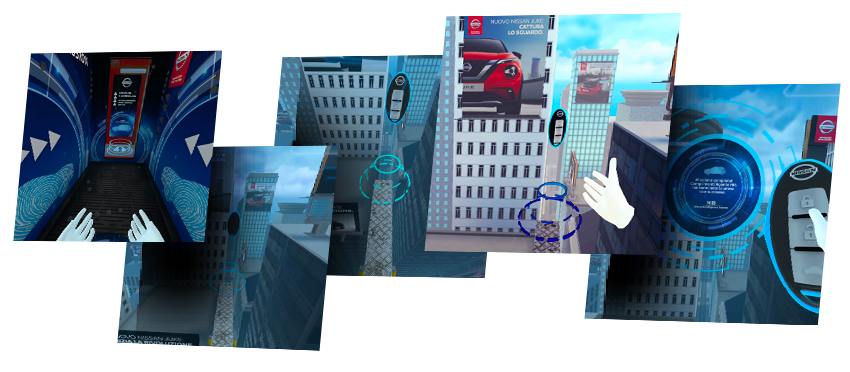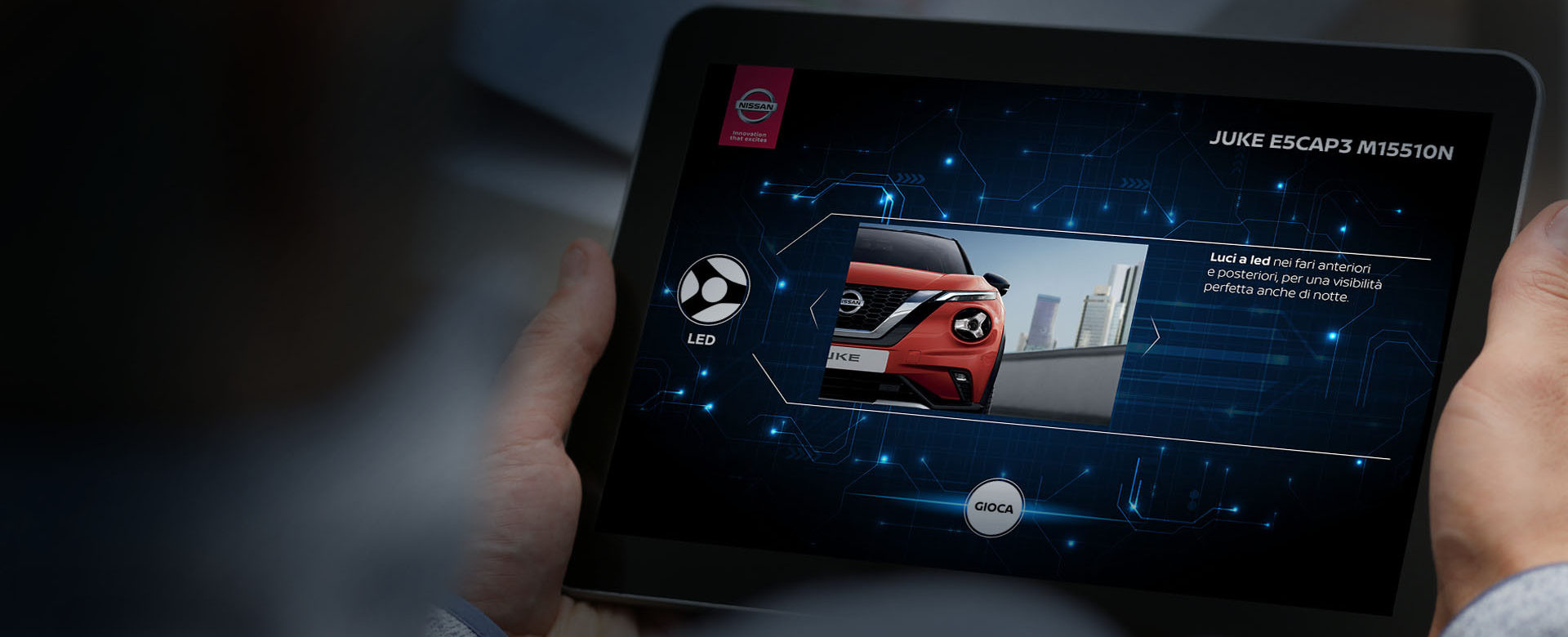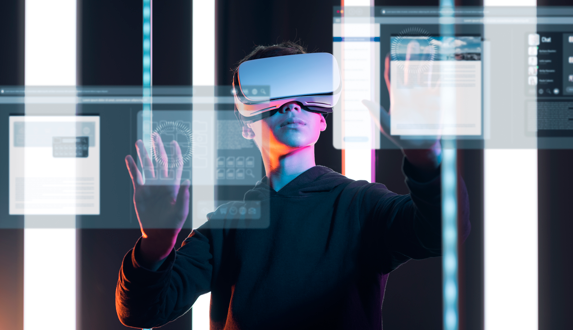For the launch of the new Nissan JUKE model, the car manufacturer decided to use customer engagement to involve and guide its users in the product selection process through advergames and immersive experiences. By harnessing the emotional power of video games, they aimed to stimulate conversion. This case of customer engagement was developed in partnership with the agency LatoC as an advergame solution.
The Context
We are increasingly surrounded by marketing messages. Whether at the metro or bus stop, in the squares of our cities, or even while relaxing on the beach, advertising banners fly above us.
Microsoft states that the average human attention span is 8 seconds. Interactions become even shorter with younger audiences, Millennials, and Gen Z, who represent 64% of the global population*. How can we advertise and engage the audience? How can we stimulate a viewer’s interest and cultivate it?
These questions form the basis of this case study, which arose from the need to engage and guide potential Nissan customers in their decision-making process, leading them through a multichannel journey from discovering a new product online to purchasing at a dealership.
The Challenge
81% of consumers who have a virtual reality experience express a willingness to spread the word to their friends**. In fact, what is the decisive element during a purchasing process? Emotion. When we experience positive emotions, we are more likely to make impulsive choices.
In addition to this neuromarketing consideration, the retail industry has also had to contend with closures due to the pandemic. Among the challenging elements, another piece was added: selling a car without being able to physically see and touch it.
Immediately after the lockdown (May 2020), 82% of the interviewed Italians stated that they were ready to purchase a car, after having to postpone their purchase due to the closures. Among them, 11% expressed their willingness to initiate the purchase process online. The pre-COVID data (same interview, same sample) registered 5% for this metric. Like many other industries, the automotive sector experienced a doubling of this intention.
Furthermore, 80% of these respondents expressed their willingness to proceed with the purchase through video or audio procedures, indicating that the audience has become more comfortable with digital tools.
This led Nissan to address the challenge of leveraging digital media to acquire contacts, enhance engagement, and convert them into sales-qualified leads ready to engage in sales negotiations.
The Solution and Phases of Customer Engagement
The answer was found in immersive technologies, which were utilized to accompany the customer innovatively and interactively throughout the evaluation and purchase process (omnichannel engagement).
The engagement is divided into multiple phases: starting with an advergame (an online product advertisement perceived as a game), which then becomes immersive.
#01 The advergame phase takes place online and engages the user’s creativity and curiosity. Nissan customers and prospects receive digital ads inviting them to participate in an online game. Like assembling and disassembling a puzzle, the user customizes the car’s options and features by choosing from a library of functionalities. After completing this phase, the next step physically takes them to the dealership, enlisting the user in the Nissan Intelligence Bureau (NIB) team, where immersive technologies come into play.
#02 The goal of virtual reality is to engage the participants’ emotions: the user becomes a NIB investigator tasked with recovering the keys to the Nissan Juke. Wearing a VR headset, they are transported to a virtual world where an elevator takes them to the thousandth floor of a skyscraper. Balancing on a wooden plank, they will find the car keys positioned at the end of the beam. It’s a breathtaking virtual reality experience that not everyone dares to face! The excitement of earning the keys in a virtual mode then transforms into reality once the headset is removed. After completing the mission, the physical key is handed over for a real test drive with the Nissan Juke.

#03 This is the moment for augmented reality. Through a tablet available at the dealership, the prominent and innovative features of the chosen car are showcased. By interacting with the app, users can play, discover, and interact with the new functionalities. It offers a much more interactive experience compared to having the car explained by a salesperson.

The devised solution allows for guiding the user throughout the entire customer journey, enhancing awareness and product experience. It spans from digital engagement (where the user is at home in front of their PC) to immersive engagement (inside the dealership).
Insights on Design and Technology
Since augmented reality is accessible through a simple smartphone, retailers can easily showcase products that can be purchased online. In the case of automotive, it is possible to see a car in one’s garage even if it physically isn’t there.
While augmented reality is limited by the frame of a smartphone, virtual reality allows users to go beyond and enter a purely holographic and digital reality. Virtual reality has been used in the automotive industry for years to visualize what doesn’t exist, such as infinite customizations projected onto one’s car (colors, options, models). This extends to the concept of virtual commerce.
The combination of these two technologies allows for the maximum enhancement of a product experience and makes the visit to the dealership much more rewarding.
AR/VR in the world of retail: read more in-depth >
Advergames for Customer Engagement: Benefits and Results
As a result of the project, Nissan tracked nearly 3,600 online players, with 10% of them coming through word-of-mouth referrals. Almost 3,900 people visited the dealership to complete the experience that started online.
The benefits of immersive realities are numerous:
- The ability to choose options and features through a more effective AR visualization than a digital brochure.
- With VR, it is possible to test the product in a spatial dimension and have an experience similar to reality.
- The virtual driving simulator allows users to experience driving as if it were real.
- The entire experience contributes to improving the perception of Nissan as an innovative brand close to its customers.
JUKE CASE HISTORY from Lato content on Vimeo.


